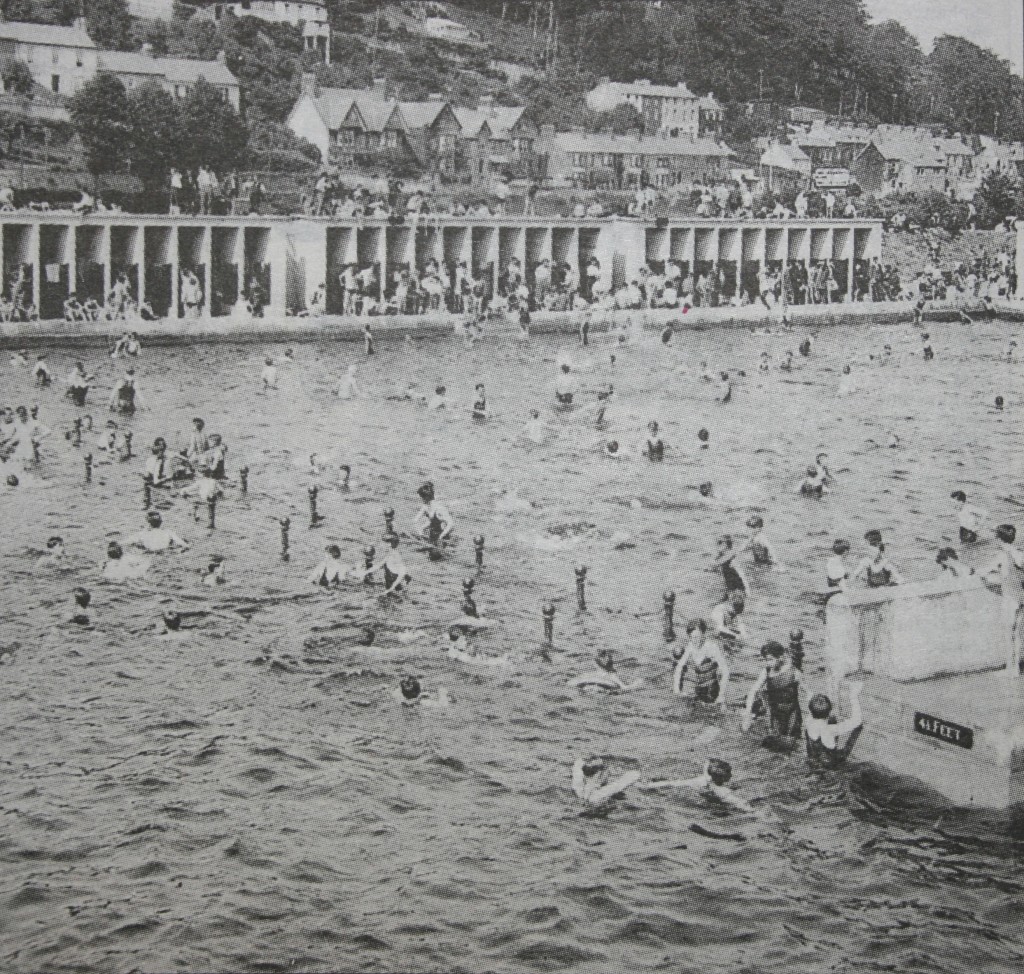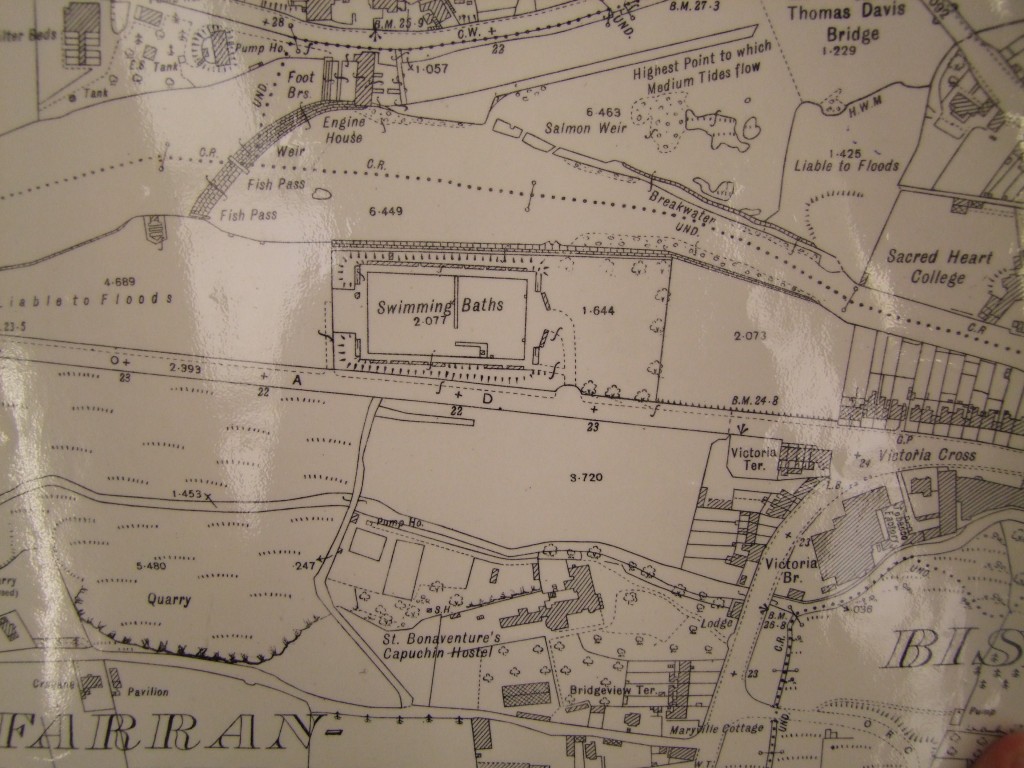
Kieran’s Our City, Our Town,
Cork Independent, 10 March 2011
In the Footsteps of St. Finbarre (Part 250)
Cork’s Proudest Possession
“I hope for many years this pool will be a pool of strength, a pool of healthfulness and open air life for the people of Cork. I have pleasure in congratulating the people of its possession and those who are responsible for it, on the good job they have done; may it remain for a long time one of the proudest possessions of the City of Cork” (Hugo V Flinn TD, Cork Examiner, 21 June 1934 on officially opening the Lee Baths)”.
Eighteen months after the closure of the Irish Industrial and Agricultural Fair, the summer of 1934 coincided with the opening of Cork’s new municipal and open-air unheated swimming pool on the Lee Fields. Billed as one of the largest of its type in Ireland, it was officially opened on Wednesday afternoon, 20 June 1934 by Mr Hugo V Flinn T.D., Parliamentary Secretary to the Minister for Finance.
The Cork Examiner highlights several reasons for its construction especially the city’s enormous unemployment problems. The City Manager Philip Monahan set out to create an enterprise of considerable magnitude, which would have in it a large labour content for even the unskilled labourer, plus create a municipal project that would have social and economic value. In the wider context, Monahan was probably well aware of the growing interest internationally in swimming and how the popularity of swimming pools was spreading. Oliver Merrington, in his work on the history of open air swimming pools, records that over 37 such pools opened in the UK in the 1930s. In Cork, the Eglington Street Baths (which were opened in 1901) could not accommodate the growing numbers of swimming enthusiasts.
The Lee Baths cost £23,000 and part of this was paid for by central government whilst the rest was paid for by Corporation bank loans. In a positive sense 75 per cent of £23,000 was spent on wages. Another issue was where the building was to be erected outside the confines of the city boundaries. That was dealt with the assistance of legal teams between Cork Corporation and Cork County Council. The Corporation also sought advice from Mr J Weldon, President of the Munster Branch of the IASA. Resident Corporation engineer Patrick J Harrington was in charge of the construction whilst Mr. Stephen W. Farrington attended to the concrete design.
According to the Dictionary of Irish Architects, Stephen Farrington (1889-1965) was Cork City Engineer from 1924-1958 and in a sense was a right hand man to Philip Monahan for four decades overseeing and engineering in particular the design of the new suburban local authority housing schemes. Farrington was born in Cork City circa 1889 and came from a distinguished Cork Presbyterian family. He studied at Cork University, where he obtained BA and ME degrees. After graduating he worked for a time in Northern Ireland, first with Belfast Corporation, then with the Belfast & Co. Down Railway, and finally as town surveyor of Lisburn, Co. Antrim. In 1924 he was appointed city engineer of Cork, a post which he held until his retirement in 1958. For many years Farrington lectured on municipal engineering at University College, Cork. A fluent speaker of Irish and French, he was an active member the Cork Literary and Scientific Society. He was also a keen sportsman, which in part also probably influenced the creation of the Lee Baths.
The inaugural gala at the Lee Baths took place after the official opening 20 June 1934. Witnessing the events was the Lord Mayor Ald. Sean French, Hugh V Flinn T.D. and other guests. Competitors compared the new site favourably with the Eglinton Street Baths and spectators commented on their spacious accommodation. The programme comprised schoolboy, junior and senior squadron races, a polo match and several novelty events; The schoolboys squadron race was won by Christian Brothers College and second went to Presentation Brothers College. The junior squadron race was won by the Republican Swimming Club, second by Sunday’s Well and third place by Dolphin. The senior squadron race was won by Sunday’s Well, second by Dolphin and third by Highfield. A lifesaving exhibition was given by R Bogan and P Renouf. In the senior polo challenge match, Sunday’s Well were defeated by Dolphin by five goals to one. In the swimming, a number of strokes were demonstrated from breaststroke, lifesaving backstroke, over arm sidestroke, trudgeon stroke, trudgeon crawl, back crawl and dual rhythm crawl.
In the early years, women were not allowed to swim in the Lee Baths. The Cork Examiner’s record of the opening day highlights a letter of protest against the exclusion of ladies at the baths; seventy signatures were attached to it, the majority of which were women; others included that of a TD. They claimed that the Corporation was abusing its authority by prohibiting a large section of the population from bathing at the Lee Baths. Their letter gave the example of equality at the open air pools at Blackrock and Dalkey in Dublin Dun Laoghaire, Bangor, Portrush, Armagh,Warrenspoint and Newcastle. They asked for restrictions to be lifted at the Eglinton Street Baths and for the entire use of those baths during the summer months for women. Their requests were not met.
To be continued… I’m looking for memories of the Lee Baths, any help much appreciated…
Captions:
581a. Photograph from Cork Corporation 1934 diary of the Lee Baths (source: Cork City Library)
581b. Section of 1948 ordnance survey map of Lee Fields showing the Lee Baths (source: Cork City Library)
